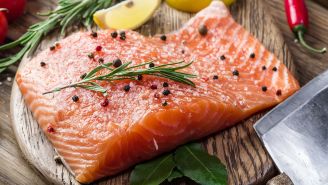4 heart attack signs women should know
Women may not recognize these symptoms as signs of a heart attack.
Updated on October 22, 2024

Heart disease is the leading killer of women in the United States, responsible for 1 in 3 deaths each year. Tens of thousands of those deaths are caused by heart attacks. Heart attacks occur when the flow of oxygen-rich blood to the heart muscle is blocked. If the blockage isn’t treated quickly, heart muscle begins to die, and healthy tissue is replaced with scar tissue.
Evidence shows that women often wait longer than men to call for help during a heart attack, which can be fatal or result in more serious or lasting problems. In one December 2018 study published in European Heart Journal: Acute Cardiovascular Care, researchers found that on average, it took women 37 minutes longer than men to dial an ambulance for a heart attack.
One reason for this discrepancy may be that women downplay their symptoms or just don’t realize they need urgent medical attention. They are also less likely than men to have “classic” symptoms, like chest pain. Women tend to experience lesser-known heart attack symptoms, too, such as shortness of breath, nausea, vomiting, fatigue, or breaking out into a cold sweat, which could be confused with another condition, such as the flu or heartburn or indigestion.
Every second is important when you're having a heart attack. Delays in treatment increase the risk for worse outcomes. Don't ignore these four heart attack symptoms in women.

Unusual fatigue
We all get tired from time to time, but if your exhaustion has no discernable cause, or happens alongside other worrisome symptoms, it could signal a problem with your heart. Most women—about 90 percent—don't know fatigue can be a heart attack symptom, and many don’t get help when they need it, according to the American Heart Association.
Don’t ignore the following warning signs:
- You become fatigued very suddenly.
- You feel extremely tired during activities that wouldn't normally wear you out.
- You haven't exerted yourself but you still feel exhausted.
A heart attack might affect your breathing, too. Feeling a bit winded can be normal after a workout or other physical activity, but if you're struggling for air and haven't gotten off the couch, take note. Shortness of breath, or dyspnea, is a common symptom of heart attack in women.
If you feel unusually tired with no explanation why, or if exhaustion is accompanied by nausea, sudden dizziness, or cold sweats, see medical attention right away. Seek immediate treatment also if you're gasping for air for no good reason.

Indigestion and heartburn
Heart attack symptoms can be mistaken for even mild heartburn or indigestion. When stomach acid backs up in your esophagus, you might experience a burning sensation in your chest and throat, also known as heartburn. Indigestion describes a group of symptoms including abdominal pain or burning and fullness shortly after eating.
If your heartburn or indigestion doesn’t go away on its own or it's accompanied by shortness of breath or sweating, get checked out. This is particularly important if you have a burning sensation in your chest or throat, but you haven’t had anything to eat or drink and you haven’t taken any medication that could cause heartburn.

Pain in the neck, jaw, arms, stomach or back
Along with chest pain, pain in the left arm is a classic and well-known heart attack symptom. What you may not realize is that pain from a heart attack can radiate throughout the upper body and spread to the neck, jaw, shoulders, either or both arms, stomach, and back.
These symptoms can be subtle and confusing at times, and may feel like pressure or squeezing in the upper parts of your body. This tightness may or may not happen with other symptoms, like dizziness, lightheadedness, or shortness of breath.

Nausea and vomiting
Nausea (and vomiting) are among the common symptoms of a heart attack, particularly among women. Unfortunately, nausea can signal some other conditions, including the stomach flu, food poisoning, or a food allergy, which could prevent women from seeking help right away.
Don’t delay emergency medical care if your nausea or vomiting occur with other heart attack warning signs, like chest or arm pain, fatigue, or shortness of breath.

What to do
If you think you’re having a heart attack, call 911 right away—don't drive yourself to the hospital. The operator may advise you to chew aspirin if you’re not allergic while you wait for help to arrive.
Calling for help is almost always the fastest way to get the treatment you need. The emergency medical team can begin treatment as soon as they arrive, up to an hour sooner in some cases than if you got to the hospital by car; you may also be treated faster at the hospital itself. Medical professionals are trained to revive someone whose heart has stopped, as well.
Every minute counts when you're having a cardiac event, and getting treatment within 90 minutes of a heart attack can increase your chances of a full recovery.

Take steps to reduce your risk
You can't control all of your heart attack risk factors—including race, age, and family history—but there are some ways to reduce your odds of a cardiac event.
Protect your heart by:
- Scheduling routine appointments to assess your heart-related risks and have your blood pressure and cholesterol monitored
- Not smoking, which can cut your heart disease risk in half
- Getting active—even small amounts of exercise can add up and provide health benefits
- Eating a heart-healthy diet, rich in fruits, vegetables, whole grains, and lean protein
Your healthcare provider can help identify ways to get your heart health in check. If you've put off seeing your provider, make an appointment and get on the right track to better heart health.

American Heart Association. 2022 Heart Disease & Stroke Statistical Update Fact Sheet Females & Cardiovascular Diseases. 2022.
Mozaffarian D, Benjamin EJ, et al. Heart Disease and Stroke Statistics—2016 Update: A Report From the American Heart Association. Circulation. 2016;133:e38–e360
National Heart, Lung, and Blood Institute. What Is Coronary Heart Disease? Last updated March 24, 2022.
Meyer MR, Bernheim AM, Kurz DJ, et al. Gender differences in patient and system delay for primary percutaneous coronary intervention: current trends in a Swiss ST-segment elevation myocardial infarction population. European Heart Journal: Acute Cardiovascular Care. 2019;8(3):283-290.
Centers for Disease Control and Prevention. Heart Disease: Heart Attack Symptoms, Risk, and Recovery. Reviewed January 9, 2024.
American College of Cardiology. Seeking Treatment Earlier May Improve Heart Attack Outcomes. January 4, 2016.
Cleveland Clinic. 3 Heart Attack Signs Women Shouldn’t Ignore. October 26, 2021.
Harvard Health Publishing. Heart attacks in women. December 16, 2019.
Mayo Clinic. Symptoms: Fatigue. December 2, 2020.
National Heart, Lung, and Blood Institute. What Is a Heart Attack? Last updated March 24, 2022.
MedlinePlus. Heartburn. Reviewed January 30, 2023.
National Institute of Diabetes and Digestive and Kidney Diseases. Definition & Facts of Indigestion. Last reviewed November 2016.
American Heart Association. Heartburn or heart attack? Last reviewed April 16, 2018.
American Heart Association. Heart Attack Symptoms in Women. Last reviewed July 31, 2015.
MedlinePlus. Nausea and vomiting – adults. Reviewed July 1, 2021.
Johns Hopkins Medicine. Heart Attack. Accessed September 22, 2022.
American Heart Association. Aspirin and Heart Disease. Last reviewed March 20, 2019.
American Heart Association/American Stroke Association. When Minutes Matter Systems of Care for Acute Cardiovascular Conditions. 2013.
Centers for Disease Control and Prevention. Heart Disease: Know Your Risk for Heart Disease. Last reviewed December 9, 2019.
Johns Hopkins Medicine. Smoking and Cardiovascular Disease. Accessed February 21, 2024.
Featured Content

article

slideshow

slideshow
